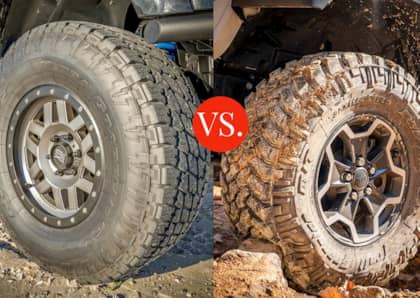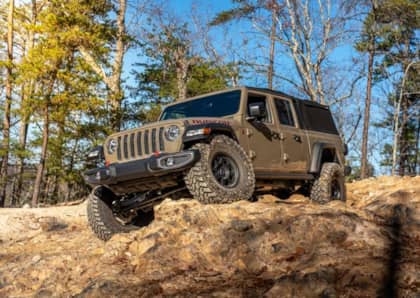Off-Roader 12-Volt Air Compressor Buyer’s Guide
There’s no question that dropping the air pressure in your tires will increase the ride quality and traction off-road. While airing down is easy, you’ll need a reliable way to air back up once you have wrapped up your wheeling day. With so many 12-volt compressor options on the market, it can be a bit overwhelming trying to narrow down which is the best for your vehicle. To help you cut through the noise, we are going to focus on what features you need to look for and what to avoid.
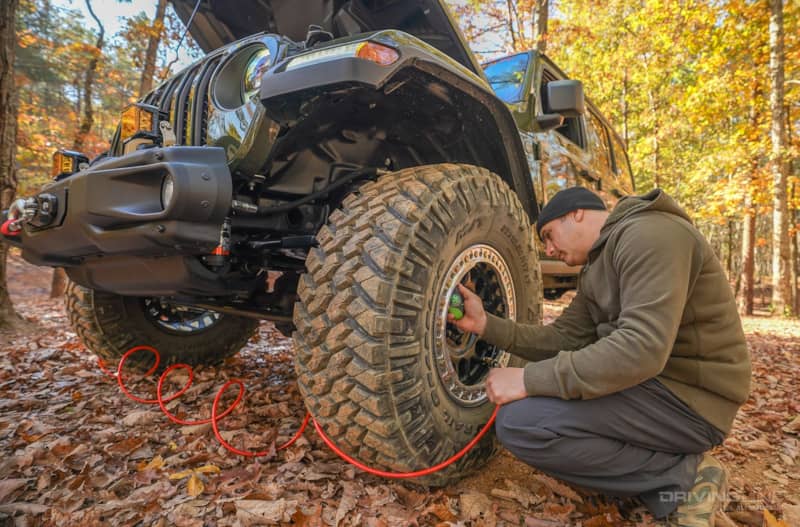
CFM
If you want to get an idea of just how fast an air compressor will fill up your tire, look at the CFM rating. A higher cubic feet per minute rating equates to more air volume driving into your tire within a 60 second time interval. Keep in mind that most compressors only list their CFM ratings at zero psi. Unfortunately, this doesn’t give you the full picture as CFM will generally decrease as pressure rises. Regardless of that, it’s still important to aim for a higher CFM compressor as it will be faster than one with a lower CFM rating.
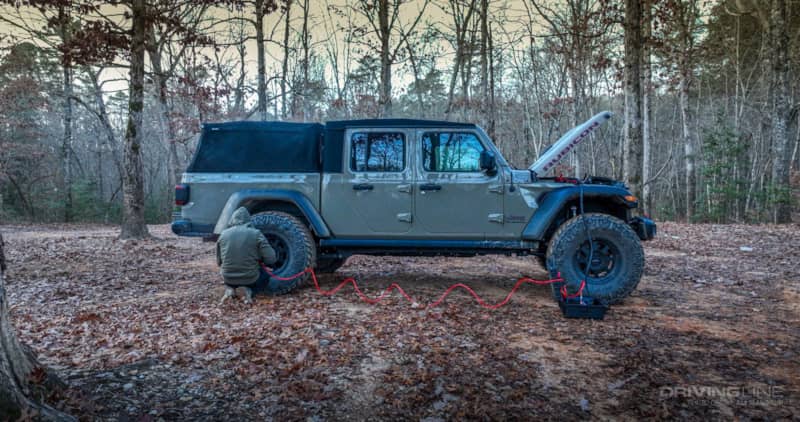
Duty Cycle
The compressor’s duty cycle rating is an indicator of how long the compressor can run continuously before needing to cool down. The higher the duty cycle percentage, the longer the runtime. The tradeoff here often comes with CFM. For example, a compressor with a 33-percent duty cycle rating might have double the CFM of a compressor with a 100-percent duty cycle rating. The trick is to ensure that you can air up all four of your tires within the runtime of that compressor. The amount of psi your tires require, and the tire size impacts this greatly. More on that next.
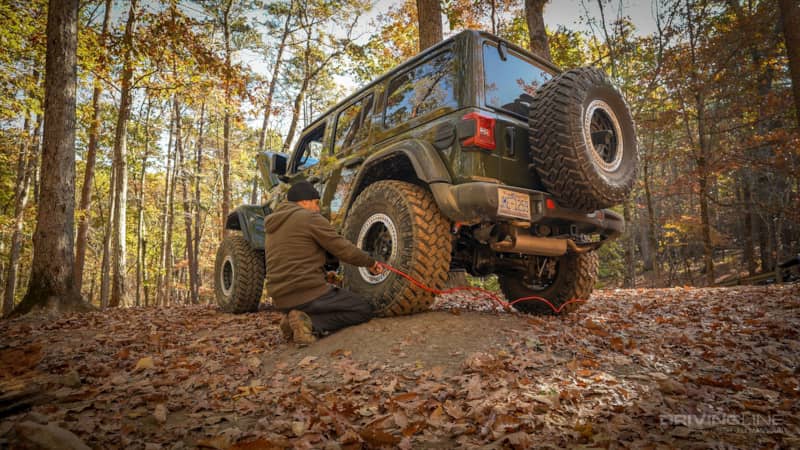
Tire Size
A great rule of thumb when it comes to 12-volt compressors is that the larger the tire, the more duty cycle percentage you’ll need. If you get a compressor with too short of a run time, you risk it getting hot and shutting down mid-use. This could extend your air up time significantly. A 100-percent duty cycle rating is typically recommended for anything over a 37-inch-tall tire.
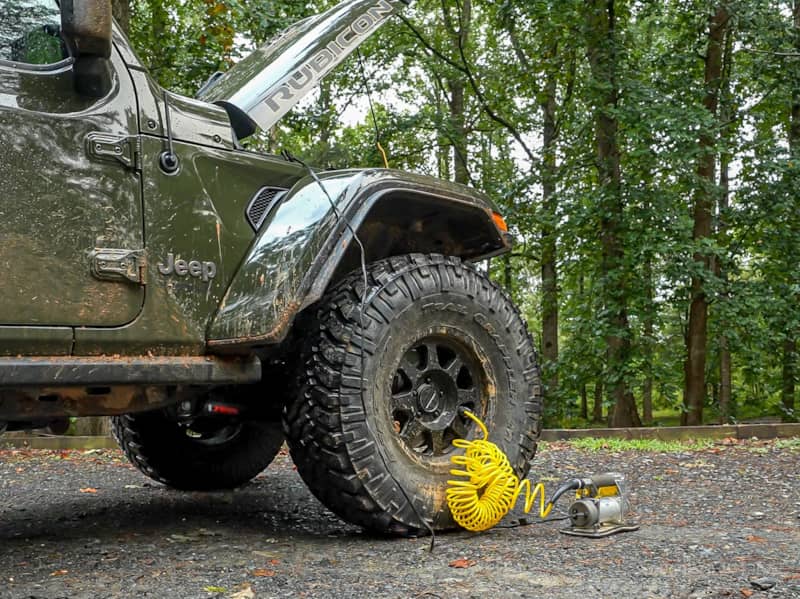
AMP Draw
A 12-volt air compressor should not harm your vehicle’s electrical system in any way, but it will be demanding on it. Not only do you want to make sure your battery is in good condition, but you should keep the vehicle running while using the compressor. If your vehicle already sees a high electrical demand from other aftermarket accessories, investing in a secondary battery is highly recommended.
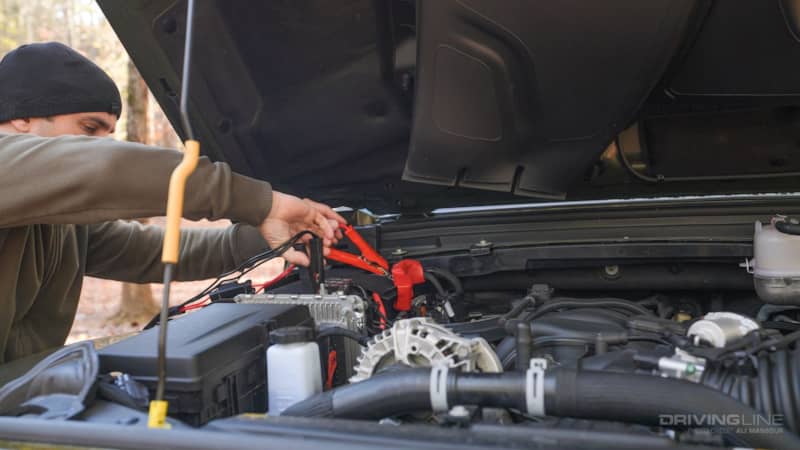
Portable Vs Fixed
Having a permanently mounted air compressor in your vehicle is extremely convenient, but not every rig will have a good spot for an onboard setup. If your vehicle does not, we highly recommend looking at some of the many portable compressor options on the market. Having the ability to remove it completely is great for a daily driver as you’re not hauling around extra gear or sacrificing space. Also, be sure to look at the hose length that comes with each kit to ensure that it’s long enough for your vehicle.
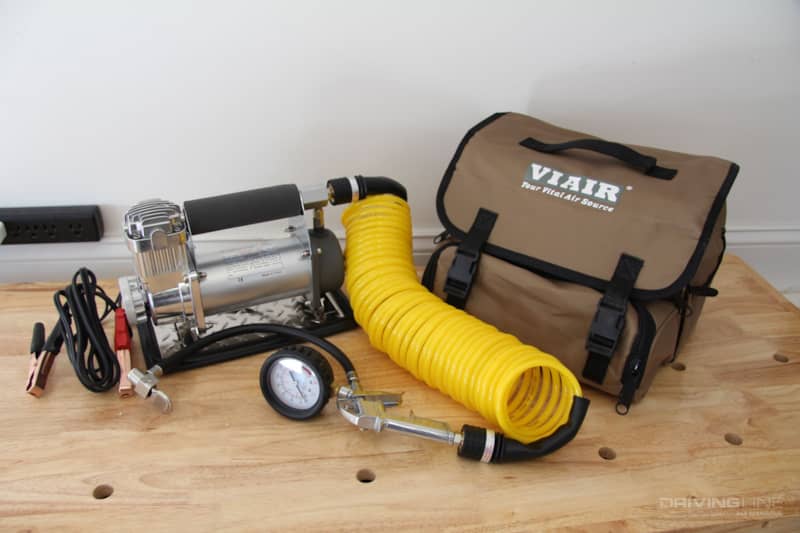
Power Tank
We can’t talk about portable air without mentioning Power Tank. This company specializes in portable air tanks that are designed to be filled with CO2. The pros of going with a Power Tank is that they are extremely fast. In fact, it's often double the speed of even some of the most powerful portable air compressors. The two main cons are the tanks are fairly large and you will need to refill the tanks every few trail rides (depending on tire size and use). If you are looking for the absolute fastest option, a Power Tank is hard to beat.
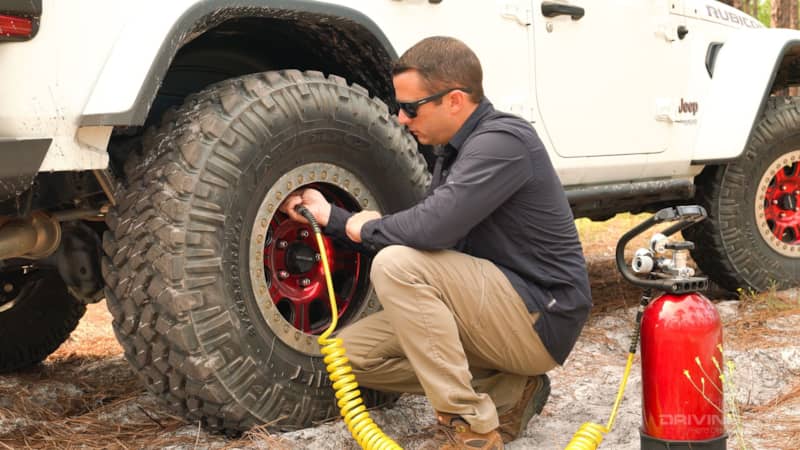
Real World Testing
To give you an example of how CFM makes a difference, we tested two 100-percent duty cycle compressors on a 38x13.50R17 Nitto Trail Grappler. Airing from 12 psi to 31 psi, we measured the speed at which a Viair 450P with 1.66 CFM compared to a Rough Country 12-volt Twin compressor with 6.16 CFM. The Viair put up an average time of 4:18 per tire, while the Rough Country did it in just 2:13. That’s a considerable time savings.
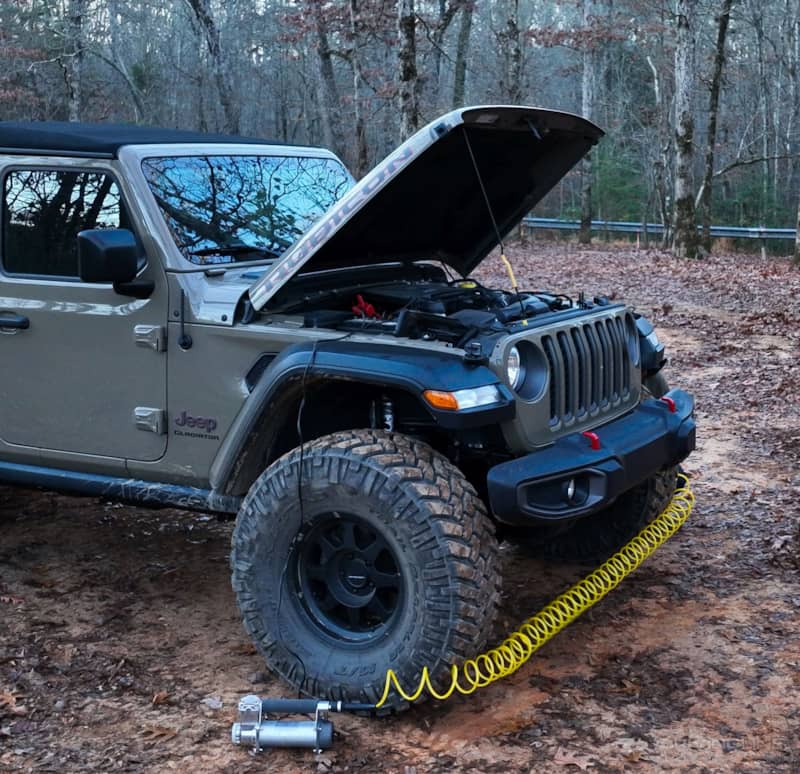
More From Driving Line
- Want to know more about off-road air-compressors? Be sure to watch our full video breakdown.






